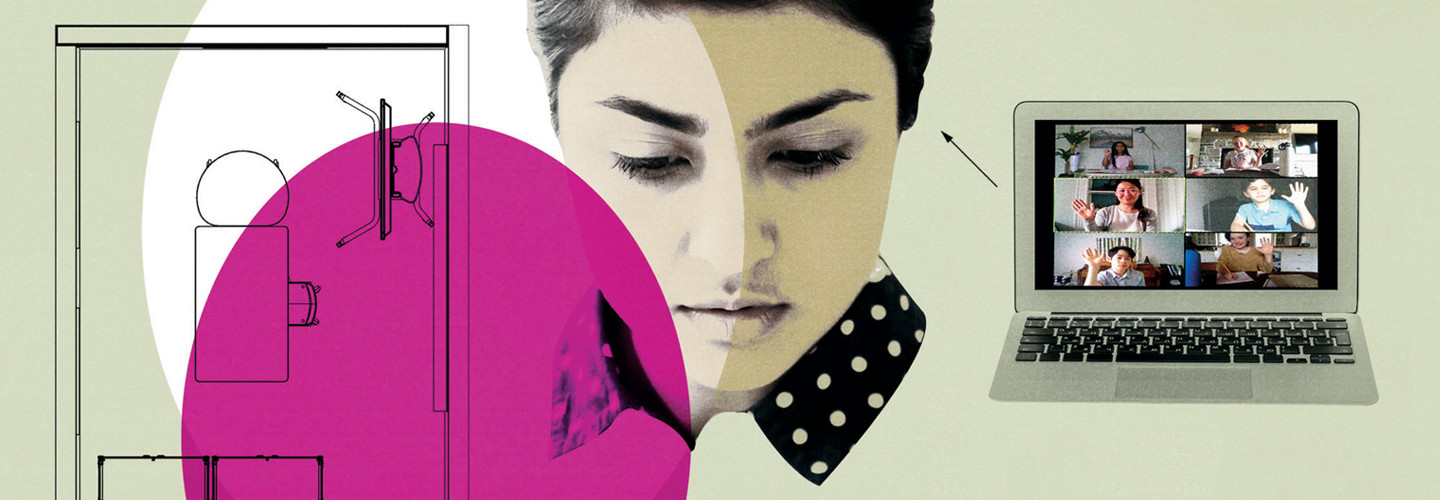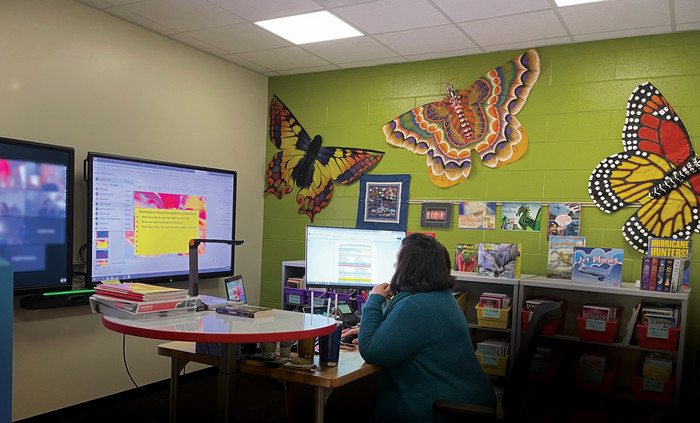Green Bay Area Public School District's virtual learning studios in Wisconsin are stocked with tech to boost engagement. Classroom photo courtesy of Green Bay Area Public School District
Teachers who want to move around the studio can control the Poly Studio camera, and the device’s high-quality microphone and speakers ensure students stay engaged.
“It doesn’t matter how good the teacher is — if the virtual environment isn’t engaging to students, they won’t learn,” Patchak says.
LEARN: Minimize video lag with these wireless casting tips.
Technology Ups Interactivity Between Online Teachers and Students
Establishing virtual schools in a physical location is important because there are times when students need in-person support or must take standardized tests that aren’t offered online.
When the pandemic began, St. Mary’s County Public Schools in Maryland had been exploring a virtual school offering for about five years. As school administrators began seeing firsthand how some students benefited from remote learning, the district applied for and received grant money for a new virtual school to be run out of an existing building.
“We’d been doing online learning for a long time, just not in an environment specific to that purpose,” says Maggie Giles, academic dean of the St. Mary’s County Public Schools’ Virtual Academy. “During the pandemic, we found students who were thriving with learning virtually, so we wanted to fund a tech-enabled virtual academy.”
To that end, St. Mary’s County Public Schools established its K–12 virtual academy in part of an existing school. “It’s a very small, historic building, but with large classrooms,” says Heather Wysokinski, district supervisor of accountability and library media. There are 15 modular classrooms (three per regular classroom), each with a Dell Latitude 7420 laptop, Dell 43-inch monitor, Logitech webcam and Jabra Evolve2 65 wireless headset, so teachers can better hear and speak to remote students.
St. Mary’s also outfitted the school’s cafeteria with similar technology, plus a 60-inch smart TV for times when parents or students need to come into the school for tests or presentations best delivered in a collective setting.
DISCOVER: How can educators prepare K–12 students for online testing?
“We also use that cafeteria space for our success coaches, who are para-educators supporting families and students who don’t always show up online,” Wysokinski says.
Danville Public Schools in Virginia is also expanding physical spaces for its virtual classes. Last fall, the district launched the I.W. Taylor Virtual Academy in a decommissioned school building and now reaches about 850 students online in grades K–12. Different hallways serve different grade levels, with multiple instructors teaching from each classroom using Promethean whiteboards, laptops, monitors, document cameras and webcams. The teachers also wear noise-canceling Bose headsets to help them stay focused on their remote students without distracting other teachers.
“If we were to walk into a classroom right now, the only thing you’d hear is teachers talking,” explains Marcus Chaney, the district’s director of information technology. “Teachers love the classroom technology because the interaction it creates is great.”
And for the I.W. Taylor Virtual Academy, like other schools that have established full-time virtual programs, interaction inside and outside the virtual classrooms is what it’s all about. Even their gym classes are virtual and interactive. Teachers go live from the school’s gym and wear GoPro cameras to engage physical education classes.
“Even though the students aren’t in the gym, they’re at home doing calisthenics,” says Chaney. “They can see the gym teacher’s perspective of running laps or shooting baskets.”
According to Cindy Hamblin, a virtual learning experience should incorporate multiple modalities, content types and opportunities for engagement. These high-tech learning studios help instructors do just that. And as technology continues to rapidly expand, and demand for virtual schools continues to grow, online learning will evolve even more.











